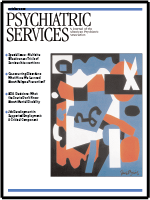Handbook of Racial and Ethnic Minority Psychology
Handbook of Racial and Ethnic Minority Psychology is the fourth volume in the Racial and Ethnic Minority Psychology series. It is a collection of papers divided into six parts: conceptual, professional, and training issues; ethnic minority research and methods; social and developmental process; stress and adjustment; clinical interventions; and applied and preventive psychology. It aims to provide "the needed conceptual and theoretical foundations, normative data, research findings, and pragmatic strategies distinctive to work with persons of color."
At first glance, the term "handbook" does not seem like an accurate description for this 780-page volume. However, from the start the book clearly meets the definition of a handbook as a guidebook for travelers, for it skillfully guides seasoned explorers and novices alike on a journey of discovery through a rich landscape of psychological theory, research, and practice.
Part 1—Conceptual, Professional, and Training Issues—is an excellent representation of the text. Each part offers "resources for teaching, research, and action" through general overviews and issue-specific chapters. The stage is set with the chapter "A Tale of Challenge and Change: A History and Chronology of Ethnic Minorities in the United States." The authors honestly portray psychology's role in perpetuating "scientific racism," describe the impact of sociopolitical forces on psychology, and summarize the involvement of minorities in the field from 1869 to 2002. This chapter is a sound introduction to chapters that follow in Part 1, such as the brave and commendable paper "The Psychology of Tokenism: Psychosocial Realities of Faculty of Color."
This book is a tool not only for mental health researchers and clinicians but also for students and professionals in other fields. The chapters avoid esoteric discourse and clearly describe basic principles and terminology. For example, in "Ethnic Research is Good Science," the authors make an effort to define terms such as "translation" and "conceptual equivalence" before discussing them in more detail.
Although the book could not focus on all issues or populations, even the culture-specific chapters provide concepts that can be applied to research and practice with other groups. For example, "Infant Mental Health in African-American Families: A Sociocultural Perspective" looks specifically at African Americans but illustrates "how culture might influence parenting behaviors, attitudes toward mental health, and children's mental health outcomes" across populations.
A refreshing aspect of this book was the passionate tone that permeated the text. Papers such as "Examining the Impact of Violence on Ethnic Minority Youth, Their Families, and Communities: Issues for Prevention Practice" and "Science and Challenges of HIV Prevention in Diverse Communities: Sex, Culture, and Empowerment" describe interventions that were scientifically evaluated and theoretically sound. However, the chapters still conveyed a sense of the emotional backdrop that makes this field of study so rewarding. In the acknowledgments, the editors thank their ancestors for nurturance and wisdom and express a hope that their experiences will live on through their families. With this book, the authors will themselves inspire a family of researchers, practitioners, and students to take the field to new levels.
Dr. Henderson is a chief resident in the department of psychiatry of the University of Maryland/Sheppard Pratt and a minority fellow of the Substance Abuse and Mental Health Services Administration and the American Psychiatric Association.



